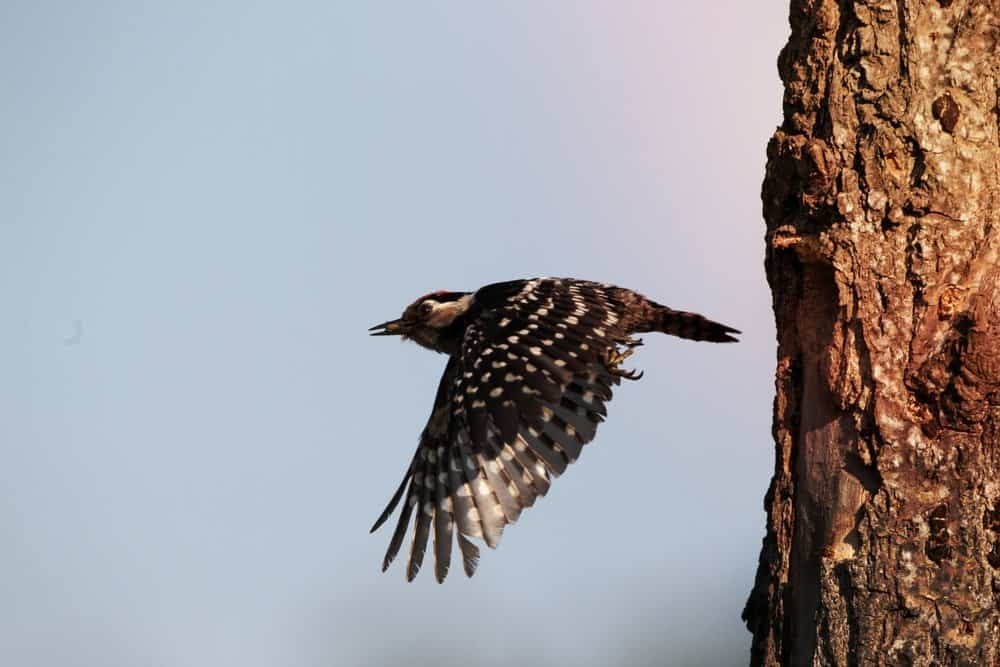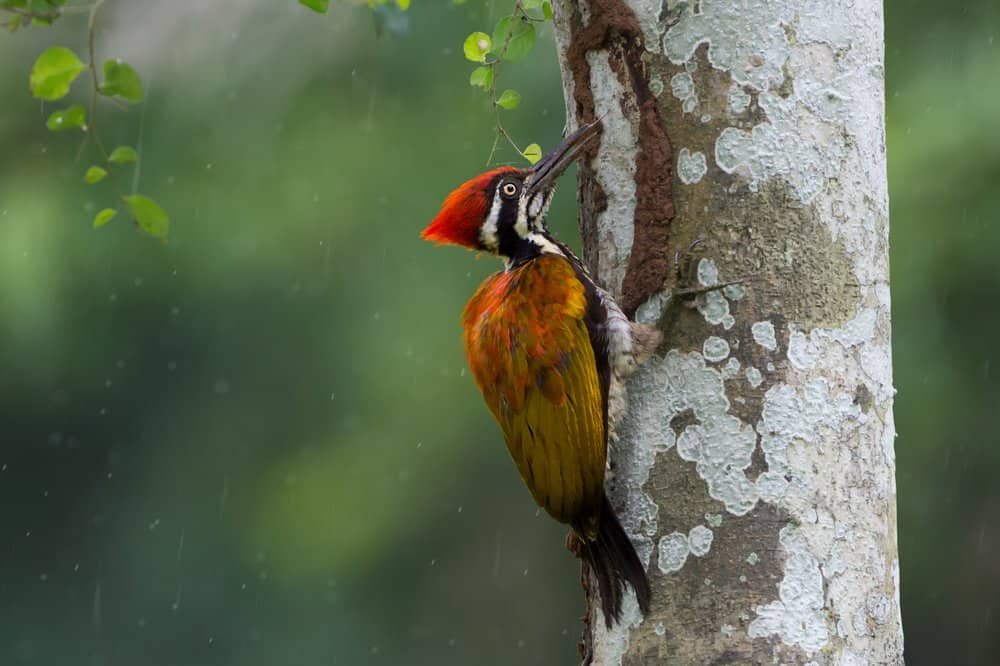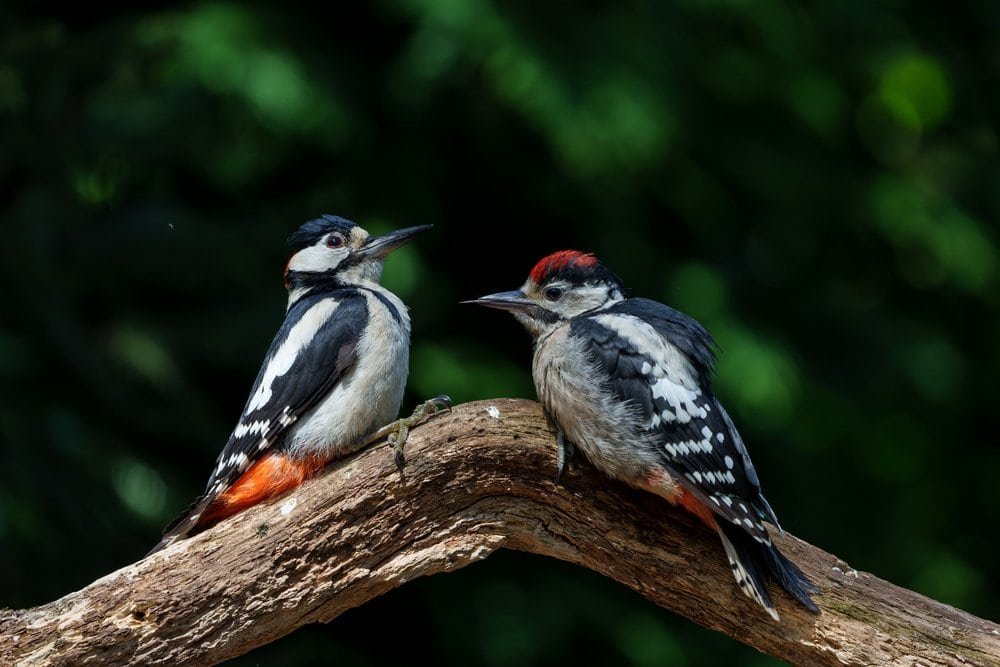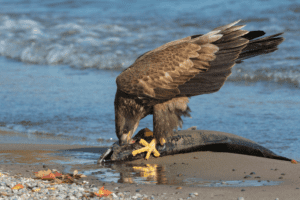Have you ever wondered What do Woodpeckers Eat? Woodpeckers are a fascinating species of bird known for their unique behaviors and habitats. One question that often comes to mind when observing woodpeckers is, “What do they eat?” The diet of woodpeckers can vary depending on the specific species and their geographic location. However, the general diet of woodpeckers consists of insects, fruits, nuts, and sap from trees.
Insects: The primary food source for woodpeckers is insects. These birds are known to be expert insect hunters, using their strong beaks and long tongues to extract insects from trees. Some of the most common insects that woodpeckers feed on include carpenter ants, beetles, caterpillars, and grubs.
Fruits and Nuts: In addition to insects, woodpeckers also have a taste for fruits and nuts. During the warmer months, when insects are more abundant, woodpeckers will supplement their diet with fruits like berries and apples. As colder weather approaches and insect populations decline, these birds will rely more heavily on nuts such as acorns and beechnuts.
Sap: Another food source for woodpeckers is sap from trees. These birds have a unique adaptation that allows them to extract sap from trees without damaging the tree itself. They use their strong beaks to create holes in the bark, and then insert their long tongues to lap up the tasty sap inside.
Table of Contents
Challenges Faced by Woodpeckers

Woodpeckers face numerous challenges in maintaining their populations and habitats. Habitat loss, climate change, and invasive species are just a few of the threats that they must navigate. Additionally, some woodpecker species have been hunted for their feathers or considered pests by humans.
There are many conservation efforts in place to help protect woodpeckers and their habitats. These include preserving and restoring natural habitats, educating the public about the importance of these birds, and implementing laws to protect them from hunting or disturbance.
Diversity and Distribution of Woodpeckers

Depending on the list you look at, there are something like 234 to 254 species in this family. Not too shabby that are found worldwide. They can be found in various habitats, from forests to deserts, and even urban areas. However, the highest diversity of woodpecker species is found in tropical rainforests. The name of the family comes from the Latin word picus, which means woodpecker. Fair enough. And picus probably came from a related Latin word, picco, meaning to strike or peck.
It has three, possibly four, distinct subfamilies in the family Picidae. Wrynecks are divided into two subspecies. Piculets then come in roughly thirty different species. Piculets are small woodpeckers that resemble tiny nuggets, as implied by their name. They have short tails and stubby bills. The final and largest of the subfamilies are the so-called “true” woodpeckers. Approximately 200 species exist.
Genetic data indicates that one piculet species, the Antillean Piculet, is divergent enough that it probably should be assigned to its own subfamily within the woodpecker family. This unique bird lives on the island of Hispaniola in the Caribbean.
The smallest woodpecker in the world might be the Bar-breasted Piculet that lives in the Amazon Basin of South America. This little bird is only 3 inches long, which is 7.5 centimeters (about 2.95 in). That’s not much larger than some hummingbirds.
The Great Slaty Woodpecker is at the other end of the spectrum. This massive beast can grow to a maximum length of 20 inches (50 centimeters) and a maximum weight of 1.25 pounds (560 grams). It may not seem like much but wait—that’s a bird.
Almost all of the long-necked, long-billed woodpecker’s color is gray. Asia’s Southeast is home to it.
Speaking of necks, the Pileated Woodpecker is a species that lives in my area of the forest. It is the largest Picidae family member found in North America. It resembles a standard-issue crow in size. These large black, white, and red birds in the forest are my favorite to watch and hear. They have a little pterodactyl-like appearance to something primordial.
Although most of the 240 or so species of woodpeckers are woodland dwellers, they can be found in a diverse range of environments. Some people reside in savannas or open forests, while others are found in deserts or grasslands.
They are conspicuously absent from Madagascar, New Guinea, Australia, and New Zealand. They aren’t in Antarctica either, but that almost goes without saying. Not so many trees down there…
This biogeographic pattern is a little surprising. I mean, woodpeckers managed to get everywhere else, right? One explanation is that maybe woodpeckers are very reluctant to fly long distances over water, over stretches of open sea.
We have 60 species here in North America. The most observed are the Downies, which are our smallest woodpeckers and they’re regular visitors to backyard feeders.
South America has the highest diversity of any continent, with between 85 and 92 species. The Green-barred Woodpecker, Red-crowned Woodpecker, and Campo Flicker are the most common species there.
In Europe, you’re most likely to see Great Spotted, Green, and Black woodpeckers. There are 9 other species living on that continent. So, a total of 12. Only 4 are found in the United Kingdom. Interestingly, the African continent has just 33 woodpecker species. The most widespread and commonly seen is the Cardinal Woodpecker.
What Do Woodpeckers Eat? Adaptations for Feeding

To effectively feed on their varied diet, woodpeckers have unique adaptations that set them apart from other bird species. Their strong beaks and long, sticky tongues allow them to reach deep into tree bark and extract insects or sap. They also have stiff tail feathers that act as a supportive brace when they are pecking at trees.
Once our intrepid woodpecker breaches the insect tunnels in the rotting wood, it uses its long, sticky tongue to snatch its prey. A Red-bellied Woodpecker tongue can extend about three times the length of the bird’s bill. Long tongues like this are the norm for woodpeckers. So, chameleons and anteaters aren’t the only animals with crazy long tongues.
But where does this tongue go when the woodpecker isn’t using it? It retracts as part of an anatomical structure called the hyoid apparatus. This structure includes the tongue, the hyoid bones, muscles, and connective tissues. The hyoid apparatus, including the tongue, wraps all the way around the back of the woodpecker’s skull.
Imagine your tongue pulling back into your mouth, then behind your head, and then down over your forehead into your eye socket. That’s sort of what happens to woodpeckers.
Impact on Ecosystems

Woodpeckers play a vital role in maintaining healthy ecosystems. By feeding on insects, they help control pest populations that can damage trees and crops. Additionally, their foraging behavior also contributes to the decomposition of dead wood, which helps recycle nutrients back into the soil.
Woodpeckers are omnivorous birds with a diverse diet consisting of insects, fruits, nuts, and sap. Their unique feeding behaviors not only sustain their own populations but also have a positive impact on the surrounding environment.
Next time you see one of these birds in action, take a moment to appreciate the important role they play in our ecosystems. Woodpeckers are truly remarkable birds with a diverse diet and unique adaptations for feeding. They not only contribute to the balance of ecosystems but also bring joy to those who observe them
Woodpeckers and Culture

Woodpeckers have also been a part of human culture and mythology for centuries. In Native American folklore, they are viewed as symbols of strength and determination. They have also been featured in many works of art, literature, and music throughout history.
Woodpeckers are not only important for their role in maintaining healthy ecosystems but also add beauty and fascination to our world. Whether we are admiring their unique feeding behaviors or incorporating them into our cultural beliefs, woodpeckers continue to captivate us with their presence.
As we strive towards conservation efforts and better understanding of these birds, it is important to remember the integral role they play in our natural world.
Read Also: What Animals Have Scales?





